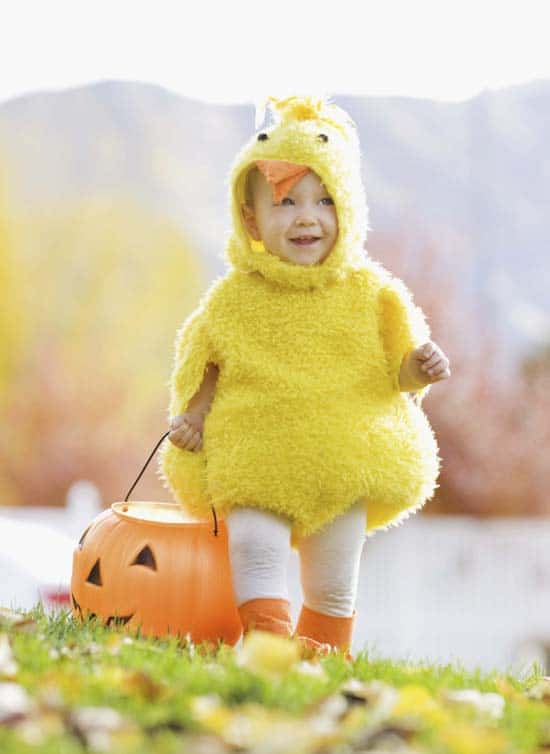Trick or Treating is an American tradition where kids get tons of candy while dressed up in a fun costume. As pirates, princesses, and zookeepers hit the streets, parents and nannies should remember these important safety tips.
1. Make sure the costume fits the child properly.
Although a long tail or a tight-fitting mask may look amazing, make sure all pieces of the costume fit and are comfortable. Keep skirts and pants at a length that does not cause tripping, and ensure the costume allows for safe shoes. Costumes should also allow children to have their full range of motions for arms, legs, and head to prevent an injury in the event they fall. Masks should not obscure vision as children need to be able to see clearly.
2. Use makeup and hair gel instead of masks.
Replace heavy masks with creativity that allows for easier movement and normal fields of vision. Creative makeup easily replaces superhero, animals, and other masks.
3. Add reflectors, headlamps, and glow brackets or necklaces.
These help drivers and other people see the child to avoid accidents and also helps families and friends keep track of each other.
4. Be mindful of younger kids.
Often, trick or treating starts just before sunset and this is the best time to take younger children. Toddlers and preschoolers, with their parents or guardians, can be the first trick or treaters and gather their candy before the scarier costumes are out and about. If a younger child gets scared of a costume or home decorations, they may bolt in fear and can easily get hurt running down the street.
5. Never allow the children to enter a home.
Trick or treating should be done on the porch and/or driveway but not in the home. Some neighbors may create haunted houses and ask children to go inside. Unless this is a well-known neighbor and friend, do not enter – it’s best to stay outside.
6. Trick or Treat with friends.
Older kids who are participating without direct adult supervision should travel together and tell their parents the route they plan to take. Cell phones can be used to check in periodically. Make sure every child knows the time they are expected back home.
7. Limit your area.
Just because you can get a full pillowcase of candy from your neighbors doesn’t mean you should. Trick or treating is fun and getting candy holds great appeal for kids but don’t feel like you have to hit every home in the neighborhood. Set the expectations for younger children on how far you will go. Also, set time limits for older children. Respect that some homes may not participate, so only visit houses with the porch light on, respecting the privacy and property of those who may not be home.
8. Inspect all treats.
Before letting children eat any candy, go through their loot and throw out any items that appear to be opened, damaged, repackaged, or homemade. Also, if children have allergies, inspect the ingredients of all candies and treats.
Trick or treating has been a tradition since the Middle Ages, but these modern tips will help keep our children safe. This is one of many safety resources provided to nannies and parents by the faculty at the Nanny Institute.


Recent Comments